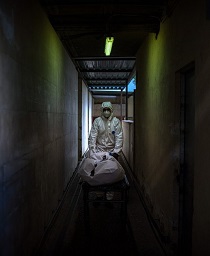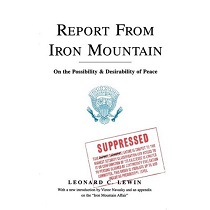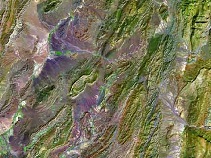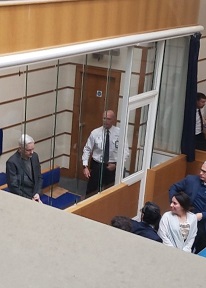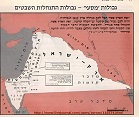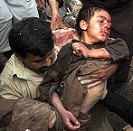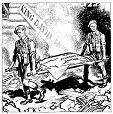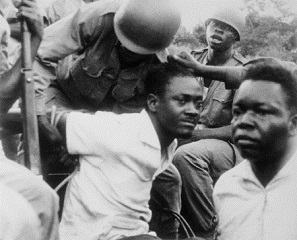Washington’s Support for Right-Wing Secessionist Movements in Countries Targeted for Destabilization
"The image he projected, by his use of vocabulary and his manner, frightened some people. He gave the impression that he was not a man who could be dominated. And a man who could not be dominated was dangerous." ~ Jean van Lierde, advisor and friend of Patrice Lumumba
Washington constantly accuses Russia of backing «secessionists» in eastern Ukraine against the right-wing and fascist-backed regime in Kiev. However, when it comes to backing secessionists against countries targeted by Washington for destabilization, America’s Central Intelligence Agency and the Pentagon wrote the book on such operations.
From supporting the secessionist movement in Katanga that sought to destabilize the government of Patrice Lumumba in newly-independent Congo to its backing of Ahwaz and Baluchi separatists against the government of Iran, the United States has no room accusing any other country of supporting secessionist movements to achieve foreign policy aims…
In 1960 and 1961, the CIA station in Leopoldville, now Kinshasa, Congo conspired with right-wing Congolese leaders like General Joseph Mobutu and Joseph Kasavubu to not only assassinate nationalist Prime Minister Patrice Lumumba but also prop up a secessionist regime in Elisabethville, now Lubumbashi, Katanga. Lumumba was eventually kidnapped and sent to Katanga where he was murdered by Belgian mercenaries and loyalists of Katangan secessionist leader Moise Tshombe. Mobutu, Kasavubu, and Tshombe were all on the CIA’s payroll. The CIA’s actions in 1960 and 1962 led the way for a Mobutu dictatorship that lasted into the 1990s.
The Congo served as a Cold War-era template for CIA and the United States manipulation of secessionist movements to achieve their ends. Ever since 1950, the CIA waged a covert war on behalf of Tibetan independence leaders, including the Dalai Lama, against China. The Dalai Lama represented a feudalistic monarchy that still used slaves until Tibet was integrated into the People’s Republic of China by Chinese military forces in 1950. The CIA also placed on its payroll a number of feudalistic tribal warlords in Nepal, where Tibetan guerrillas launched military campaigns into Tibet.
The CIA was also working closely with Pakistan’s Inter-Services Intelligence (ISI), a protégé agency of the CIA, to foment secessionist movements in India during the time that Pakistan was governed by the right-wing military dictatorships led by Generals Mohammad Ayoub Khan, Mohammed Zia-Ul Haq, and Pervez Musharraf. Chief secessionist targets in India by the CIA-ISI intelligence alliance were Nagaland, Assam, Mizoram, and other states in the restive northeast region of India, as well as India’s Sikhs and Kashmiri Muslims. Under Zia-Ul Haq, the ISI and CIA cooperated in the K2 (Khalistan/Kashmir) project that promoted the secession of Khalistan as a Sikh state and Kashmir as a Muslim state. Operation Tupac was primarily directed against Indian-ruled Kashmir.
After Maoist leader Pushpa Kamal Dahal, known as Prachanda, became prime minister of Nepal after the 2008 overthrow of Nepal’s King Gyanendra, a CIA agent of influence since the days when Henry Kissinger was U.S. national security adviser in the Richard Nixon administration, the CIA began stirring up secessionism among a number of Nepal’s ethnic groups. Almost overnight, with the support of the CIA and India’s Research and Analysis Wing (RAW), secessionist movements sprang up throughout Nepal. They included the Madhesi Liberation Tigers of Terai, the Kirant Workers Party of Nepal’s Eastern Hill District, Tamang National Liberation Front, the Tamu National Liberation Front, the Magarant National Liberation Front, the Mongol Liberation Army, the Janatantrik Tarai Mukti Morcha, the Terai Liberation Front, the Limbuwan Liberation Front, and the Khambuwan Liberation Front.
In 1957, the CIA supplied weapons to secessionist rebels in Sumatra hoping to topple from power Indonesian nationalist president Sukarno. However, the rebellion failed in 1958. On May 18, 1958, a CIA-contracted B-26 piloted by American Allen Lawrence Pope was shot down over Sumatra after "accidentally" bombing a church during services and killing most of the congregants. The CIA’s fingerprints were also discovered in secessionist movements in the South Moluccas, Indonesian Borneo, and the Celebes.
The United States championed the falling dominos-like secession of republics and regions of Yugoslavia that ultimately resulted in the collapse of the Yugoslav state and its replacement with independent republics that rushed to join the European Union and NATO. The final independent republic to emerge from the former Yugoslavia is Kosovo, an organized crime-run state that continues to host a U.S. military base and which serves as a nexus for smuggling of everything from human organs and stolen vehicles to black market cigarettes and illegal narcotics. Kosovo’s neighbor Montenegro has become a virtual playground for members of the Zionist Rothschild banking family and their political minions throughout Europe.
The CIA continues to use its «Katanga model» in Africa. The self-styled leader of Matabeleland in Zimbabwe, Paul Siwela, an opponent of Zimbabwe’s President Robert Mugabe, is believed to enjoy covert support in Sweden, where he is in exile. Mugabe has been the subject of U.S. sanctions and Siwela hopes to proclaim his independent Republic of Mthwakazi in Zimbabwe’s Matabeleland and Midlands province in 2018, with the support of the U.S. Britain, Sweden, and other Western countries.
Many secessionist leaders who cooperated with the CIA did not enjoy successful outcomes for their campaigns. In 1967, Katanga’s Tshombe, who had been on the CIA’s payroll for years, was subjected to a plane hijacking by a French intelligence agent who was working on behalf of not only France but the CIA. Tshombe was flown to Algeria where he was put in prison and then placed under house arrest. Tshombe died in 1969 from «heart failure,» however many observers believed he was murdered on the orders of the CIA because of the knowledge he had of various CIA activities in Africa.
More recently, the CIA has used the secession card against anti-U.S. governments in Latin America. Three successive U.S. ambassadors to Venezuela, Charles Shapiro, William Brownfield, and Patrick Duddy, were caught by Venezuelan intelligence trying to stir up secessionist sentiments in the oil-rich Zulia state, which was a hot bed for opposition to the late President Hugo Chavez and current President Nicolas Maduro. CIA secessionist activity was centered principally in Maracaibo, from where the CIA recruited most of its operatives in the failed April 2002 coup attempt against Chavez.
US ambassador to Ecuador Linda Jewell helped stir up secessionist opposition to President Rafael Correa from the Guayaquil region’s political leaders. Guayaquil is the major port for Ecuador's oil industry.
The U.S. ambassador to Bolivia, Philip Goldberg, attempted to stir up opposition to President Evo Morales's government. This has especially involved support for separatists in Santa Cruz, Tarija, Beni and Pando provinces. It is no coincidence that these provinces are Bolivia’s largest producers of natural gas, a natural resource that the CIA and its corporate partners want to free from the control of Morales, who believes profits from energy resources should be shared equitably among the Bolivian population.
It was such egalitarian profit sharing of oil revenues among Libya’s population that eventually resulted in the CIA and other Western intelligence agencies fomenting a secessionist rebellion in eastern Libya, centered in Benghazi, which eventually led to a NATO-led attack on Muammar Qaddafi’s government. Qaddafi was eventually captured by NATO-supervised rebels, sodomized, and then executed without a trial. In addition, the CIA’s off-and-on support for Iraq’s Kurds helped the U.S. establish a bridgehead in north Iraq, which was used to overthrow, capture, and execute Iraqi President Saddam Hussein.
The United States has aided and abetted other secessionist movements around the world in efforts to destabilize countries at odds with Washington’s foreign policy goals. The United States, as always, remains at the pinnacle of hypocrisy when complaining about other nations support for ethnic minorities in nations where they have a vested national interest.
___________________________________________________________________________________
Wayne Madsen is an investigative journalist, author and syndicated columnist. Has some twenty years experience in security issues. As a U.S. Naval Officer, he managed one of the first computer security programs for the U.S. Navy. He has been a frequent political and national security commentator on Fox News and has also appeared on ABC, NBC, CBS, PBS, CNN, BBC, Al Jazeera, and MS-NBC. He has been invited to testify as a witness before the US House of Representatives, the UN Criminal Tribunal for Rwanda, and an terrorism investigation panel of the French government. A member of the Society of Professional Journalists (SPJ) and the National Press Club. Lives in Washington, D.C. His website is here.
___________________________________________________________________________________
Source: Strategic Culture Foundation. Photo: Image & Quote: World History
URL: http://www.a-w-i-p.com/index.php/2014/08/18/washington-s-support-for-right

